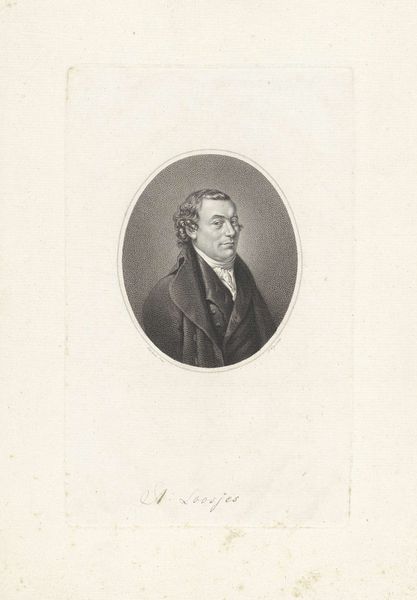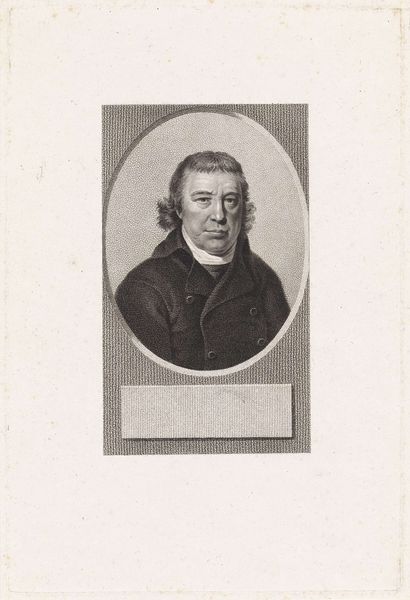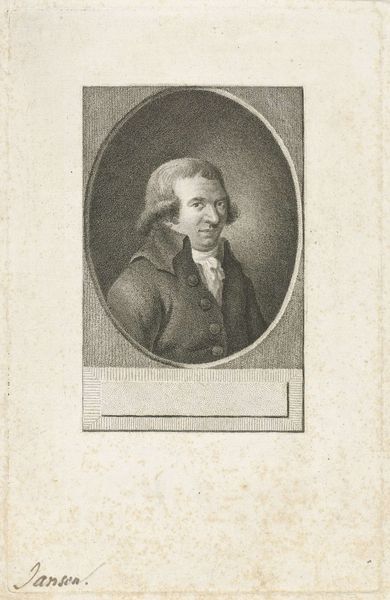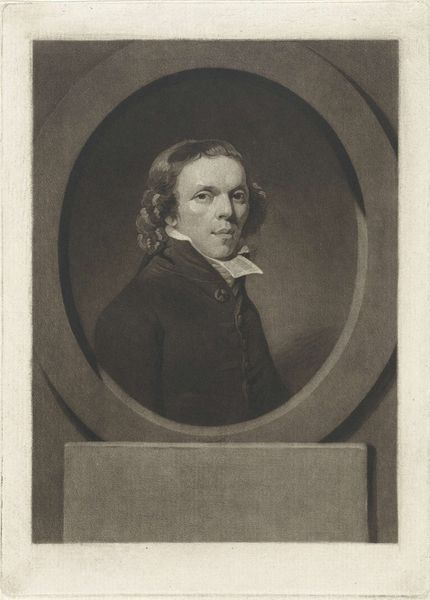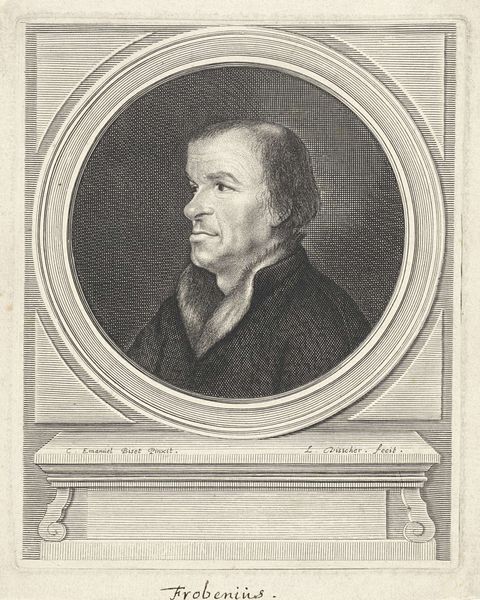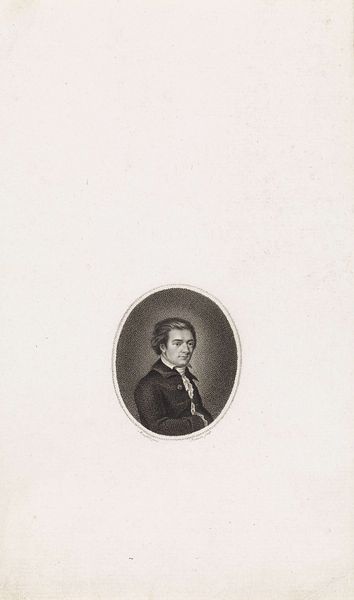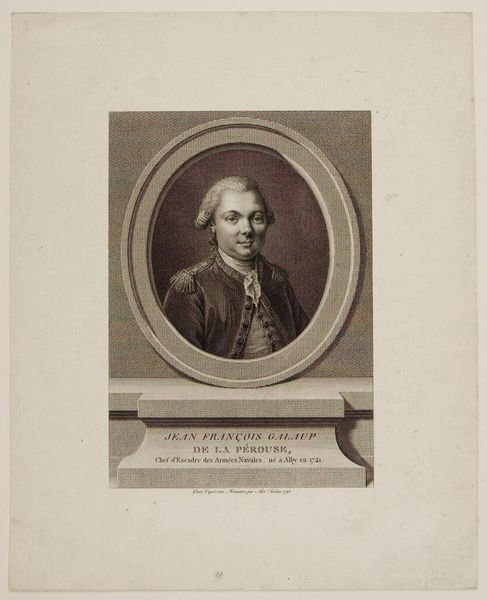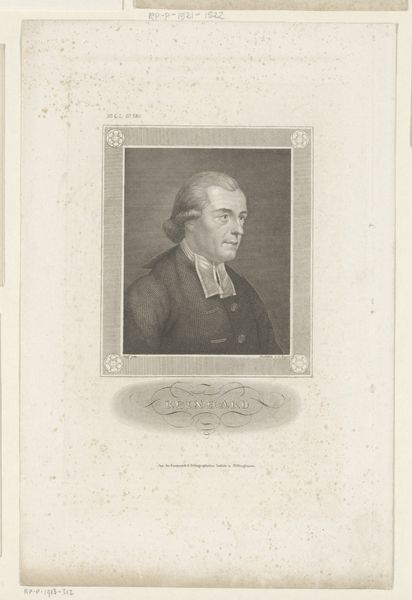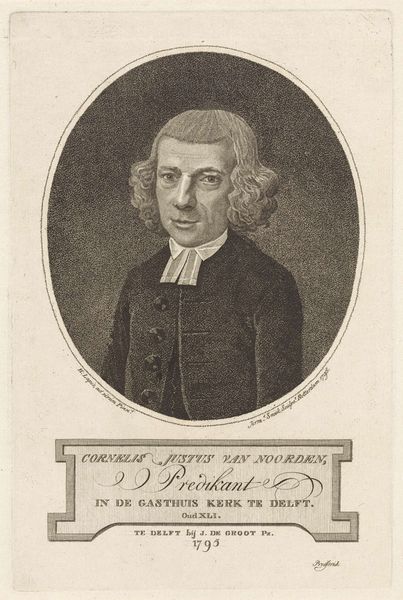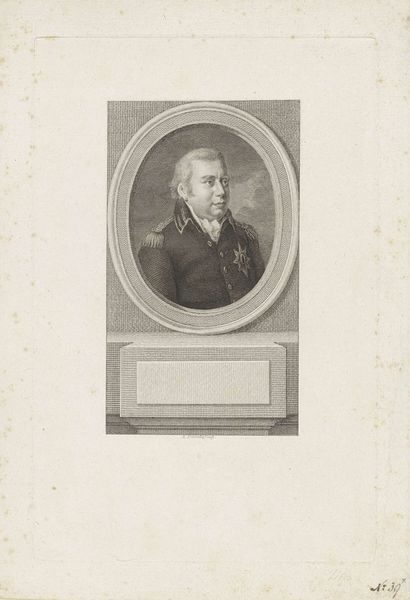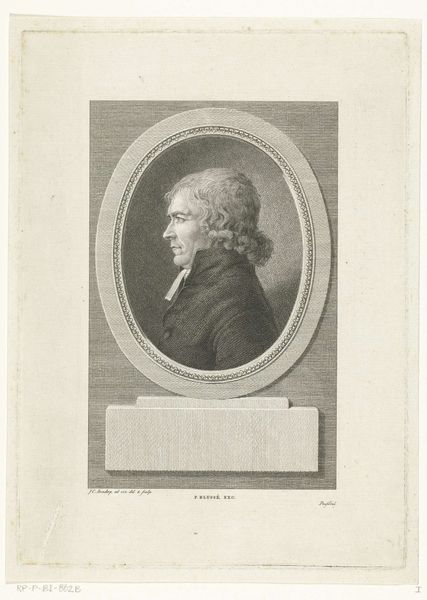
print, engraving
#
portrait
# print
#
historical photography
#
graphite
#
engraving
#
realism
Dimensions: height 460 mm, width 331 mm
Copyright: Rijks Museum: Open Domain
Editor: Here we have Jan Baptist Tetar van Elven's "Portret van Jan Nieuwenhuijzen", created between 1845 and 1853. It's an engraving, so it relies heavily on line and tone. The oval frame is an interesting choice. What strikes you about this piece? Curator: The precision of the engraved line is truly remarkable. Note the almost photographic realism achieved solely through variations in hatching and cross-hatching. Consider the oval frame - its repetition in the curves of the sitter’s face and wig creates a visual harmony. Are you attuned to that relationship? Editor: I see that now, yes. The frame really contains the image, doesn't it? So, would you say the shape is the most important aspect? Curator: Not simply the shape in isolation, but its interplay with the internal forms. The artist carefully modulates light and shadow within this defined space to sculpt the subject’s features. Observe how the limited tonal range and crisp lines contribute to the portrait's inherent formality. How do you think that limitation influenced the overall feeling? Editor: I suppose the strict limitations force you to look more closely at the details to see a greater variety of lines and forms, thus adding more richness and subtlety. Curator: Precisely. The constraints inherent in engraving actually amplify our appreciation of the artist’s technical virtuosity and compositional control. What started out as an artistic decision now creates an intimacy in our viewing. Editor: I hadn't thought about it that way before! Focusing on form really brought out details that I might have otherwise missed. Curator: It's through careful observation of these elements that we can truly appreciate the artist’s intention and the enduring power of this portrait.
Comments
No comments
Be the first to comment and join the conversation on the ultimate creative platform.
